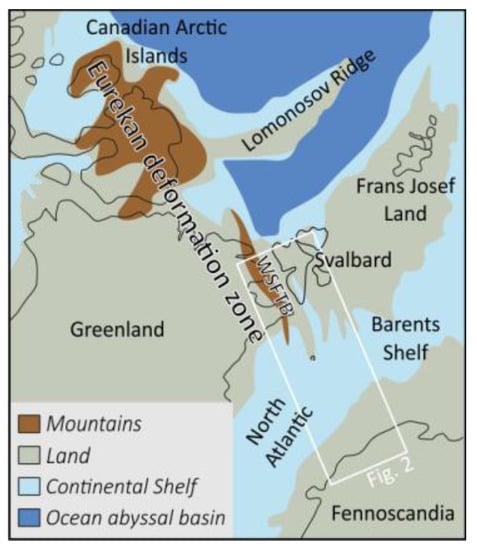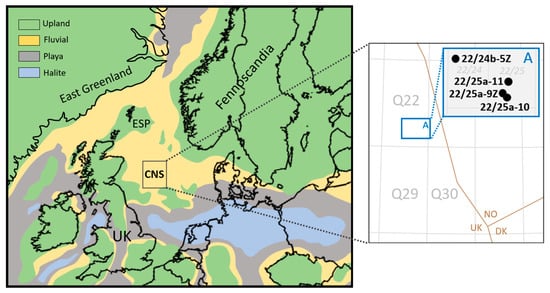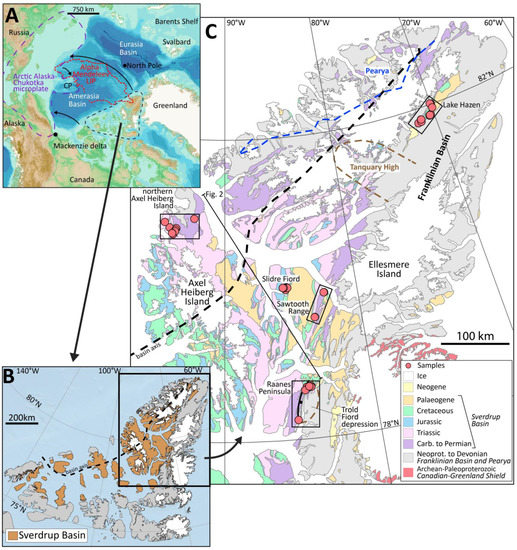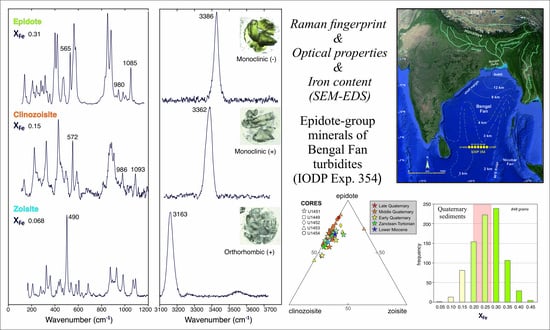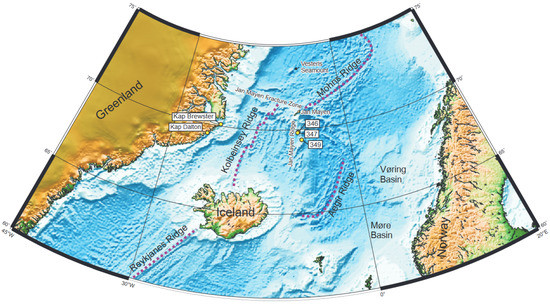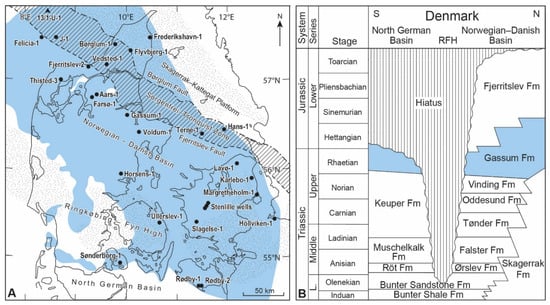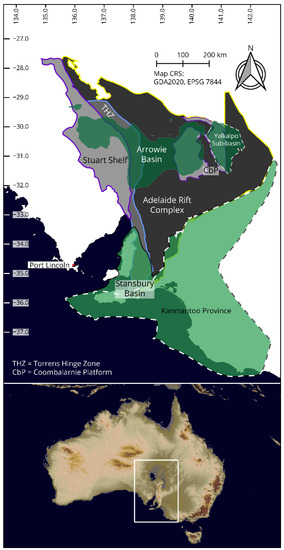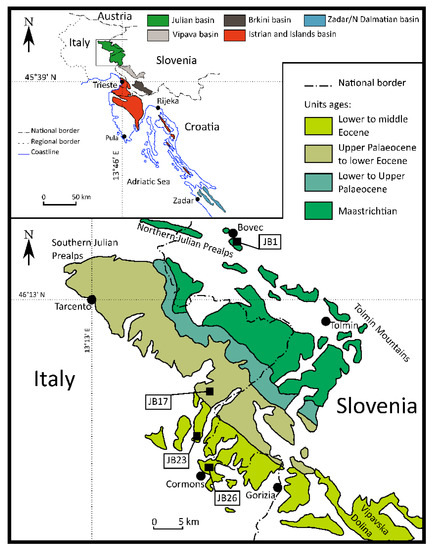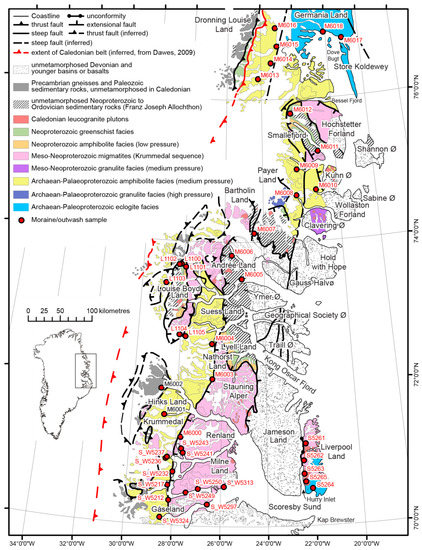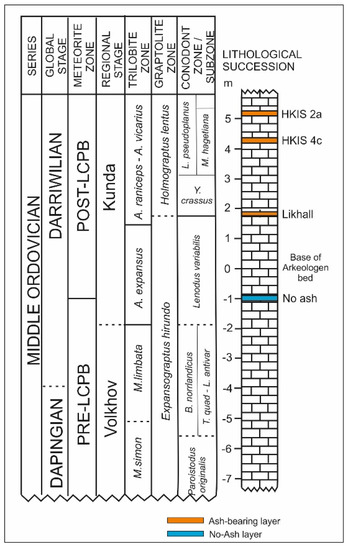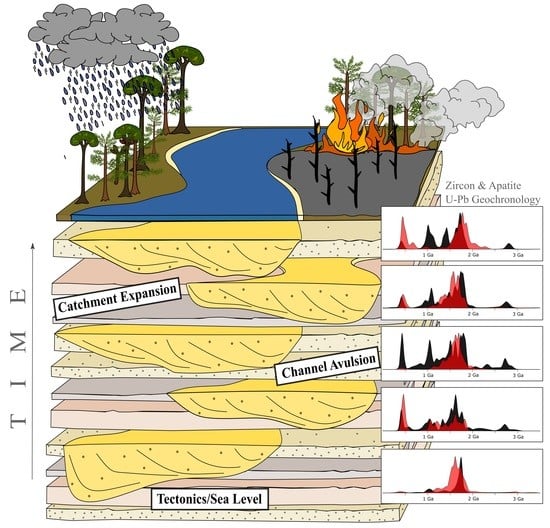Detrital Minerals: Their Application in Palaeo-Reconstruction
Share This Topical Collection
Editors
 Dr. Andrew C. Morton
Dr. Andrew C. Morton
 Dr. Andrew C. Morton
Dr. Andrew C. Morton
E-Mail
Website
Guest Editor
CASP, Madingley Rise, Cambridge CB3 0UD, UK
Interests: sedimentary provenance studies
 Dr. Shane Tyrrell
Dr. Shane Tyrrell
 Dr. Shane Tyrrell
Dr. Shane Tyrrell
E-Mail
Website
Guest Editor
Sediment Origins Research Team (SORT), Earth and Ocean Sciences and Irish Centre for Research in Applied Geosciences (iCRAG), National University of Ireland, Galway H91 CF50, Ireland
Interests: sedimentary provenance studies; sedimentology
 Dr. Gustavo Zvirtes
Dr. Gustavo Zvirtes
 Dr. Gustavo Zvirtes
Dr. Gustavo Zvirtes
E-Mail
Website
Guest Editor
Department of Geology and Petroleum Geology, School of Geosciences, University of Aberdeen, Aberdeen AB24 3FX, UK
Interests: sedimentary provenance studies; geological mapping; petrology
Topical Collection Information
Dear Colleagues,
In recent years, there have been remarkable developments in techniques employed in sedimentary provenance studies, including major and trace element mineral chemistry, isotopic analysis and thermochronology on an ever-increasing array of detrital minerals. This has been accompanied by new automated technologies to quantify sediment compositions that enable provenance studies to be applied to fine-grained sediments as well as sandstones, and increased understanding of the processes that control detrital sediment compositions (weathering, transport, hydrodynamics, diagenesis, mineral fertility). In this issue, we invite papers that utilise both traditional and novel approaches to sediment provenance studies for one of the most important geological purposes, the understanding of palaeogeography, including identification of the nature and location of sediment source regions, constraining sediment entry points and transport pathways, and linking climate and tectonics to basin development and infill. Contributions that offer multi-proxy approaches are especially welcome.
Abstract/title submission: ideally until May 31, 2022
Manuscripts due by: October 31, 2022
Dr. Andrew C. Morton
Dr. Shane Tyrrell
Dr. Gustavo Zvirtes
Guest Editors
Manuscript Submission Information
Manuscripts should be submitted online at www.mdpi.com by registering and logging in to this website. Once you are registered, click here to go to the submission form. Manuscripts can be submitted until the deadline. All submissions that pass pre-check are peer-reviewed. Accepted papers will be published continuously in the journal (as soon as accepted) and will be listed together on the collection website. Research articles, review articles as well as short communications are invited. For planned papers, a title and short abstract (about 100 words) can be sent to the Editorial Office for announcement on this website.
Submitted manuscripts should not have been published previously, nor be under consideration for publication elsewhere (except conference proceedings papers). All manuscripts are thoroughly refereed through a single-blind peer-review process. A guide for authors and other relevant information for submission of manuscripts is available on the Instructions for Authors page. Geosciences is an international peer-reviewed open access monthly journal published by MDPI.
Please visit the Instructions for Authors page before submitting a manuscript.
The Article Processing Charge (APC) for publication in this open access journal is 1800 CHF (Swiss Francs).
Submitted papers should be well formatted and use good English. Authors may use MDPI's
English editing service prior to publication or during author revisions.
Keywords
- detrital minerals
- provenance
- palaeogeography
- palaeoclimate
Published Papers (15 papers)
Open AccessArticle
U-Pb Zircon Geochronology of Detrital and Ash Fall Deposits of the Southern Paraná Basin: A Contribution for Provenance, Tectonic Evolution, and the Paleogeography of the SW Gondwana
by
Ruy Paulo Philipp, Ubiratan Ferrucio Faccini, Cesar Leandro Schultz, Gustavo Zvirtes, Matheus Philippe Bruckmann, Ernesto Lavina, Joice Cagliari, Andrea Ritter Jelinek, Renata Guimarães Netto, Adriano Roessler Viana and Miguel Angelo Stipp Basei
Cited by 8 | Viewed by 2266
Abstract
Zircon U-Pb geochronology was applied to investigate the provenance, depositional ages, and paleogeography of the southwestern Gondwana in detrital and ash fall sediments from Carboniferous to Jurassic succession of the southern Paraná Basin. Four detrital age populations suggest provenance from local and distal
[...] Read more.
Zircon U-Pb geochronology was applied to investigate the provenance, depositional ages, and paleogeography of the southwestern Gondwana in detrital and ash fall sediments from Carboniferous to Jurassic succession of the southern Paraná Basin. Four detrital age populations suggest provenance from local and distal sources located to the south, southeast, and southwest: (i) Archean to Paleoproterozoic zircons from the Rio de La Plata Craton, Nico Peres and Taquarembó terranes; (ii) Grenvillian zircons from the basement of the Gondwanides and Namaqua–Natal belts; (iii) Neoproterozoic grains from the Don Feliciano Belt; and (iv) Phanerozoic populations from Paleozoic orogenic belts and related foreland systems in Argentina, as well as eroded units of the Paraná Basin. The paleogeographic reconstruction indicates an evolution in three distinct stages: (1) a gulf open to the Panthalassa Ocean during the Carboniferous; (2) an epicontinental sea with the rise of the Gondwanides Orogeny during the Permian; and (3) continental deposits controlled by an intra-plate graben system during the Triassic. Permian–Triassic volcanogenic zircons provide constrained maximum depositional ages and attested persistent volcanism, related to the Choiyoi magmatism and effects of the climate change episodes. During the Triassic, the extensional graben system recorded the uplift of the basement through regional northwest and northeast fault systems, and the recycling of Permian zircons, modifying source-to-sink relationships.
Full article
►▼
Show Figures
Open AccessArticle
The Importance of Eurekan Mountains on Cenozoic Sediment Routing on the Western Barents Shelf
by
Michael J. Flowerdew, Edward J. Fleming, David M. Chew, Andrew C. Morton, Dirk Frei, Aukje Benedictus, Jenny Omma, Teal. R. Riley, Eszter Badenszki and Martin J. Whitehouse
Cited by 4 | Viewed by 2653
Abstract
The importance of topography generated by Eocene Eurekan deformation as a sediment source for sandstones deposited on the western Barents Shelf margin is evaluated through a sediment provenance study conducted on wellbore materials retrieved from Spitsbergen and from the Vestbakken Volcanic Province and
[...] Read more.
The importance of topography generated by Eocene Eurekan deformation as a sediment source for sandstones deposited on the western Barents Shelf margin is evaluated through a sediment provenance study conducted on wellbore materials retrieved from Spitsbergen and from the Vestbakken Volcanic Province and the Sørvestsnaget Basin in the southwest Barents Sea. A variety of complementary techniques record a provenance change across the Paleocene-Eocene boundary in wellbore BH 10-2008, which samples Paleogene strata of the Central Tertiary Basin in Spitsbergen. Sandstones containing K-feldspar with radiogenic Pb isotopic compositions, chrome spinel in the heavy mineral assemblage, and detrital zircons and rutiles with prominent Palaeoproterozoic and Late Palaeozoic—Early Mesozoic U-Pb age populations are up-section replaced by sandstone containing albitic plagioclase feldspar, metasedimentary schist rock fragments, a heavy mineral assemblage with abundant chloritoid, metamorphic apatite with low REE contents, metapelitic rutile with Silurian U-Pb ages and zircons with predominantly Archaean and Palaeoproterozoic U-Pb age populations. Our results clearly demonstrate the well-known regional change in source area from an exposed Barents Shelf terrain east of the Central Tertiary Basin during the Paleocene to the emerging Eurekan mountains west and north of the Central Tertiary Basin during the Eocene. Eocene sandstones deposited in the marginal basins of the southwestern Barents Shelf, which were sampled in wellbores 7316/5-1 and 7216/11-1S, contain elements of both the Eurekan and the eastern Barents Shelf provenance signatures. The mixing of the two sand types and delivery to the southwest margin of the Barents Shelf is consistent with a fill and spill model for the Central Teritary Basin, with transport of Eurekan-derived sediment east then south hundreds of kilometres across the Shelf.
Full article
►▼
Show Figures
Open AccessArticle
Defining Regional and Local Sediment Sources in the Ancestral Colorado River System: A Heavy Mineral Study of a Mixed Provenance Unit in the Fish Creek-Vallecito Basin, Southern California
by
Paula McGill, Uisdean Nicholson, Dirk Frei and David Macdonald
Viewed by 4228
Abstract
The Colorado River has flowed across the dextral strike-slip plate boundary between the North American and Pacific plates since the latest Miocene or earliest Pliocene. The Fish Creek-Vallecito Basin (FCVB) lies on the Pacific Plate in southern California, dextrally offset from the point
[...] Read more.
The Colorado River has flowed across the dextral strike-slip plate boundary between the North American and Pacific plates since the latest Miocene or earliest Pliocene. The Fish Creek-Vallecito Basin (FCVB) lies on the Pacific Plate in southern California, dextrally offset from the point where the modern Colorado river enters the Salton Trough; it contains a record of ancestral Colorado River sedimentation from 5.3–2.5 Ma. The basin stratigraphy exhibits a changing balance between locally derived (L-Suite) and Colorado River (C-Suite) sediments. This paper focuses on the Palm Springs Group (PSG), a thick fluvial and alluvial sequence deposited on the upper delta plain (between 4.2–2.5 Ma) when the Colorado was active in the area, allowing the detailed examination of the processes of sediment mixing from two distinct provenance areas. The PSG consists of three coeval formations: 1) Canebrake Conglomerate, a basin margin that has coarse alluvial fan deposits derived from surrounding igneous basement; 2) Olla Formation, fan-fringe sandstones containing L-Suite, C-Suite, and mixed units; and 3) Arroyo Diablo Formation, mineralogically mature C-Suite sandstones. Stratigraphic analysis demonstrates that the river flowed through a landscape with relief up to 2000 m. Satellite mapping and detailed logging reveal a variable balance between the two suites in the Olla Formation with an apparent upward increase in L-Suite units before abrupt cessation of Colorado sedimentation in the basin. Stable heavy mineral indices differentiate L-Suite (high rutile:zircon index: RZi 40–95) from C-Suite (RZi: 0–20). Both suites have garnet:zircon index (GZi) and apatite:tourmaline index (ATi) mostly above 50, although many L-suite and mixed Olla samples have much lower ATi (20–50), suggesting that the distal floodplain was wet and the local sediment had a longer residence time there, or went through several cycles of erosion and redeposition. Heavy mineral analysis, garnet geochemical analysis, and detrital zircon U-Pb age spectra allow us to quantify the amount of mixing from different sediment sources. These data show that about 30% of the mixed units are derived from the Colorado River and that up to 20% of the L-Suite is also derived from the Colorado River, suggesting that there was mutual cannibalisation of older deposits by fluvial channels in a transitional area at the basin margin. Although this study is local in scope, it provides an insight into the extent and nature of sediment mixing in a two-source system. We conclude that most ‘mixing’ is actually interbedding from separate sources; true mixing is facilitated by low subsidence rates and the rapid migration of fluvial channels.
Full article
►▼
Show Figures
Open AccessArticle
Establishing Provenance from Highly Impoverished Heavy Mineral Suites: Detrital Apatite and Zircon Geochronology of Central North Sea Triassic Sandstones
by
Iain P. Greig, Andrew Morton, Dirk Frei and Adrian Hartley
Cited by 2 | Viewed by 2687
Abstract
A study of Triassic sandstones in the central North Sea, UK, has shown that combined detrital zircon and apatite geochronology and apatite trace element analysis is a powerful tool for reconstructing provenance for sandstones with diagenetically impoverished heavy mineral suites. Sandstones in the
[...] Read more.
A study of Triassic sandstones in the central North Sea, UK, has shown that combined detrital zircon and apatite geochronology and apatite trace element analysis is a powerful tool for reconstructing provenance for sandstones with diagenetically impoverished heavy mineral suites. Sandstones in the earlier part of the succession (Bunter Sandstone Member and Judy Sandstone Member) have characteristics that indicate derivation from Moinian–Dalradian metasediments affected by Caledonian tectonothermal events, in conjunction with a Palaeoproterozoic-Archaean source unaffected by Caledonian metamorphism. Palaeogeographic reconstructions indicate that the sediment cannot have been input directly from either of these cratonic areas. This, in conjunction with the presence of common rounded apatite, indicates that recycling is the most likely possibility. The zircon-apatite association in the younger Joanne Sandstone Member sandstones indicates derivation from lithologies with mid-Proterozoic zircons (either crystalline basement or metasediments in the Caledonian Nappes), subjected to Caledonian metamorphism to generate early Palaeozoic apatites. This combination is compatible with a source region in southern and western Norway. The low degree of textural maturity associated with the detrital apatite, together with the unimodal Caledonian age grouping, indicates the Joanne sandstones have a strong first-cycle component.
Full article
►▼
Show Figures
Open AccessArticle
A Multi-proxy Provenance Study of Late Carboniferous to Middle Jurassic Sandstones in the Eastern Sverdrup Basin and Its Bearing on Arctic Palaeogeographic Reconstructions
by
Michael A. Pointon, Helen Smyth, Jenny E. Omma, Andrew C. Morton, Simon Schneider, Peter Hülse, Stephen J. Rippington, Berta Lopez-Mir, Quentin G. Crowley, Ian Millar, Martin J. Whitehouse, Dirk Frei, Robert A. Scott and Michael J. Flowerdew
Cited by 2 | Viewed by 2955
Abstract
A multi-proxy provenance study of Late Carboniferous to Middle Jurassic sandstones from the eastern Sverdrup Basin was undertaken employing optical petrography and heavy mineral analysis, chemical analysis of apatite, garnet and rutile grains, as well as detrital zircon U–Pb geochronology and Hf isotope
[...] Read more.
A multi-proxy provenance study of Late Carboniferous to Middle Jurassic sandstones from the eastern Sverdrup Basin was undertaken employing optical petrography and heavy mineral analysis, chemical analysis of apatite, garnet and rutile grains, as well as detrital zircon U–Pb geochronology and Hf isotope analysis. Late Carboniferous to Middle Jurassic strata on the southern basin margin are inferred as being predominantly reworked from Silurian to Devonian strata within the adjacent Franklinian Basin succession. Higher-grade metamorphic detritus appeared during Middle to Late Triassic times and indicates exhumation and erosion of lower (Neoproterozoic to Cambrian) levels within the Franklinian Basin succession and/or a direct detrital input from the Canadian-Greenland Shield. The provenance of northern-derived sediments is more enigmatic owing to the subsequent opening of the Arctic Ocean. Northern-derived Middle Permian to Early Triassic sediments were likely derived from proximal areas of the Chukotkan part of the Arctic Alaska-Chukotka microplate. Late Triassic northern-derived sediments have different detrital zircon U–Pb age spectra from Middle Permian to Early Triassic ones and were likely derived from the Uralian orogenic belt and/or the Arctic Uralides. The loss of this sand input during latest Triassic times is interpreted to reflect drainage reorganisation farther upstream on the Barents Shelf. Middle Jurassic sands in the northern and axial parts of the basin were largely reworked from local northern-derived Late Triassic strata. This may have been facilitated by rift flank uplift of the northern basin margin in response to rifting in the adjacent proto-Amerasia Basin.
Full article
►▼
Show Figures
Open AccessArticle
Provenance Variability in Coeval Slope Channel Systems: Hermod S2 Member Sandstone (Eocene), South Viking Graben (North Sea)
by
Wiktor Marek Luzinski, Andrew C. Morton, Andrew Hurst, Ingeborg Ims Tøllefsen and John Cater
Cited by 1 | Viewed by 2340
Abstract
Conventional and varietal heavy mineral studies of the earliest Eocene Hermod S2 Member (Mbr) sandstones in the Greater Alvheim area of the northern North Sea have revealed marked lateral variations and more subtle vertical evolution in provenance signature. Major variations are of geographic
[...] Read more.
Conventional and varietal heavy mineral studies of the earliest Eocene Hermod S2 Member (Mbr) sandstones in the Greater Alvheim area of the northern North Sea have revealed marked lateral variations and more subtle vertical evolution in provenance signature. Major variations are of geographic rather than stratigraphic nature as biostratigraphy reveals that all investigated sandstones are coeval. The provenance variations show an organized pattern, with sandstones in the north showing a different signature than those in the south. The position of the sandstones relative to the East Shetland Platform (ESP) is inferred to be the main control on provenance, with sediment input from at least two different point sources. Sediment supplied from both catchments is predominantly recycled in nature, given the mineralogical maturity of the heavy mineral assemblages, consistent with the evidence for widespread Permo-Triassic and Devonian sediments on the ESP. However, some direct supply from metasedimentary (Moine and Dalradian) basement is implied by the sporadic occurrence of unstable minerals. The southern catchment incorporated a greater exposure of Permo-Triassic sandstones than the northern catchment. The Permo-Triassic part of the catchment can be reconstructed as comprising equivalents of the Foula and Otter Bank sandstones present to the west of Shetland, with the majority of the Foula section having been stripped off prior to Hermod S2 deposition, exposing Otter Bank equivalents for erosion and redeposition. However, remnant Foula-like sandstones remained exposed further south on the ESP until at least the earliest Eocene since Foula-type garnet signatures are found in the Forties Sandstone Mbr of the central North Sea. In addition to lateral differences, stratigraphic evolution of provenance can also be detected in the Hermod S2 Mbr, with variations in key provenance-sensitive parameters related to a sea-level rise that reduced the extent of alluvial storage and altered the geological framework of the hinterland.
Full article
►▼
Show Figures
Open AccessArticle
Discrimination of Clinozoisite–Epidote Series by Raman Spectroscopy: An application to Bengal Fan Turbidites (IODP Expedition 354)
by
Mara Limonta, Sergio Andò, Danilo Bersani and Eduardo Garzanti
Cited by 6 | Viewed by 2509
Abstract
Epidote group minerals are one of the three most abundant kinds of heavy minerals in orogenic sediments, the other two being amphibole and garnet. They resist diagenesis better than amphibole and resist weathering in soils better than garnet. Their chemical composition and optical
[...] Read more.
Epidote group minerals are one of the three most abundant kinds of heavy minerals in orogenic sediments, the other two being amphibole and garnet. They resist diagenesis better than amphibole and resist weathering in soils better than garnet. Their chemical composition and optical properties vary markedly and systematically with temperature and pressure conditions during growth. Useful information on the metamorphic grade of source rocks can thus be obtained by provenance analysis. In this study, we combine optical, SEM–EDS, and Raman analyses of nine standard crystals of epidote group minerals collected from different rock units exposed in the European Alps and Apennines and develop a Raman library for efficient discrimination of epidote, clinozoisite, zoisite, and allanite by establishing clear user-oriented relationships among optical properties, chemical composition, and Raman fingerprint. This new library allows us to distinguish and reliably determine, directly from their Raman spectrum, the chemical compositions of epidote group minerals during routine heavy mineral analyses of sand/sandstone and silt/siltstone samples down to the size of a few microns. The validity of the approach is illustrated by its application to 41 Bengal Fan turbidites collected from five cores during IODP Expedition 354 and ranging in grain size from medium sand to fine silt.
Full article
►▼
Show Figures
Open AccessArticle
Provenance Response to Rifting and Separation at the Jan Mayen Microcontinent Margin
by
Andrew Morton, David W. Jolley, Adam G. Szulc, Andrew G. Whitham, Dominic P. Strogen, C. Mark Fanning and Sidney R. Hemming
Viewed by 2207
Abstract
The Eocene-Miocene successions recovered at DSDP sites on the Jan Mayen Ridge (NE Atlantic) and on the adjacent East Greenland margin provide a sedimentary record of the rifting and separation of the Jan Mayen Microcontinent from East Greenland. A combination of palynology, conventional
[...] Read more.
The Eocene-Miocene successions recovered at DSDP sites on the Jan Mayen Ridge (NE Atlantic) and on the adjacent East Greenland margin provide a sedimentary record of the rifting and separation of the Jan Mayen Microcontinent from East Greenland. A combination of palynology, conventional heavy mineral analysis, single-grain major and trace element geochemistry and radiometric dating of amphibole and zircon has revealed a major change in sediment provenance took place at the Early/Late Oligocene boundary corresponding to a prominent seismic reflector termed JA. During the Eocene and Early Oligocene, lateral variations in provenance character indicate multiple, small-scale transport systems. Site 349 and Kap Brewster were predominantly supplied from magmatic sources (Kap Brewster having a stronger subalkaline signature compared with Site 349), whereas Site 346 received almost exclusively metasedimentary detritus. By contrast, Late Oligocene provenance characteristics are closely comparable at the two Jan Mayen sites, the most distinctive feature being the abundance of reworked Carboniferous, Jurassic, Cretaceous and Eocene palynomorphs. The Site 349 succession documents an evolution in the nature of the magmatic provenance component. Supply from evolved alkaline magmatic rocks, such as syenites, was important in the Middle Eocene and lower part of the Early Oligocene, but was superseded in the later Early Oligocene by mafic magmatic sources. In the latest Early Oligocene, the presence of evolved clinopyroxenes provides evidence for prolonged magmatic fractionation. Initial low degrees of partial melting led to generation of alkaline (syenitic) magmas. The extent of partial melting increased during the Early Oligocene, generating basaltic rocks with both subalkaline and alkaline compositions. Towards the end of the Early Oligocene, the amount of partial melting and magma supply rates decreased. In the Late Oligocene, there is no evidence for contemporaneous igneous activity, with scarce magmatic indicator minerals. The provenance change suggests that the hiatus at the Early/Late Oligocene boundary represents the initiation of the proto-Kolbeinsey Ridge and separation of the Jan Mayen Microcontinent from East Greenland.
Full article
►▼
Show Figures
Open AccessEditor’s ChoiceArticle
Maturity Matters in Provenance Analysis: Mineralogical Differences Explained by Sediment Transport from Fennoscandian and Variscan Sources
by
Mette Olivarius, Henrik Vosgerau, Lars Henrik Nielsen, Rikke Weibel, Sebastian N. Malkki, Benjamin D. Heredia and Tonny B. Thomsen
Cited by 7 | Viewed by 3290
Abstract
The significance of mineralogical maturity as a provenance indicator has long been debated and we use this study to demonstrate that it can indeed be a powerful tool to track the distribution of sandstone reservoirs. We investigate the cause of the pronounced geographic
[...] Read more.
The significance of mineralogical maturity as a provenance indicator has long been debated and we use this study to demonstrate that it can indeed be a powerful tool to track the distribution of sandstone reservoirs. We investigate the cause of the pronounced geographic and stratigraphic differences in mineralogical composition that are found in the Upper Triassic–Lower Jurassic Gassum Formation across the Norwegian–Danish Basin and surrounding areas. Zircon U-Pb dating of 46 sandstone samples including analysis of 4816 detrital grains are combined with quantifications of the detrital mineralogical composition and placed in a sequence stratigraphic framework. The results show that the Gassum Formation can be divided into a southeastern region with high mineralogical maturity and a less mature region to the northwest with more feldspars, rock fragments, micas, and heavy minerals. Both the mineralogical assemblage and the provenance signature have been thoroughly homogenized in the SE region where sediment supplies from the Fennoscandian Shield and the Variscan Orogen are evident. In the NW region, sediment was initially supplied from Fennoscandia only, but the provenance abruptly changed from the Telemarkia Terrane to comprising also the more distant Caledonian Orogen resulting in a different mineralogical assemblage. The change occurred during a basinwide regression and may be caused by tectonic movements in the hinterland that permanently changed the composition of the sediment supplied to the basin.
Full article
►▼
Show Figures
Open AccessArticle
Early Evolution of the Adelaide Superbasin
by
Jarred C. Lloyd, Alan S. Collins, Morgan L. Blades, Sarah E. Gilbert and Kathryn J. Amos
Cited by 11 | Viewed by 5766
Abstract
Continental rifts have a significant role in supercontinent breakup and the development of sedimentary basins. The Australian Adelaide Superbasin is one of the largest and best-preserved rift systems that initiated during the breakup of Rodinia, yet substantial challenges still hinder our understanding of
[...] Read more.
Continental rifts have a significant role in supercontinent breakup and the development of sedimentary basins. The Australian Adelaide Superbasin is one of the largest and best-preserved rift systems that initiated during the breakup of Rodinia, yet substantial challenges still hinder our understanding of its early evolution and place within the Rodinian supercontinent. In the past decade, our understanding of rift and passive margin development, mantle plumes and their role in tectonics, geodynamics of supercontinent breakup, and sequence stratigraphy in tectonic settings has advanced significantly. However, literature on the early evolution of the Adelaide Superbasin has not been updated to reflect these advancements. Using new detrital zircon age data for provenance, combined with existing literature, we examine the earliest tectonic evolution of the Adelaide Superbasin in the context of our modern understanding of rift system development. A new maximum depositional age of 893 ± 9 Ma from the lowermost stratigraphic unit provides a revised limit on the initiation of sedimentation and rifting within the basin. Our model suggests that the basin evolved through an initial pulse of extension exploiting pre-existing crustal weakness to form half-grabens. Tectonic quiescence and stable subsidence followed, with deposition of a sourceward-shifting facies tract. Emplacement and extrusion of the Willouran Large Igneous Province occurred at c. 830 Ma, initiating a new phase of rifting. This rift renewal led to widespread extension and subsidence with the deposition of the Curdimurka Subgroup, which constitutes the main cyclic rift sequence in the Adelaide Superbasin. Our model suggests that the Adelaide Superbasin formed through rift propagation to an apparent triple junction, rather than apical extension outward from this point. In addition, we provide evidence suggesting a late Mesoproterozoic zircon source to the east of the basin, and show that the lowermost stratigraphy of the Centralian Superbasin, which is thought to be deposited coevally, had different primary detrital sources.
Full article
►▼
Show Figures
Open AccessArticle
OH-Defects in Detrital Quartz Grains from the Julian Basin (NE Italy and Slovenia): A Fourier Transform Infrared Study
by
Francesco Bernardi, Henrik Skogby and Davide Lenaz
Cited by 2 | Viewed by 2603
|
Correction
Abstract
In this study, we analyzed up to 80 detrital quartz grains from four lithic greywackes along the stratigraphic column of the Julian Basin, a synorogenic basin in the southeastern Alps between Italy and Slovenia. Fourier transform infrared spectroscopy of detrital quartz was used
[...] Read more.
In this study, we analyzed up to 80 detrital quartz grains from four lithic greywackes along the stratigraphic column of the Julian Basin, a synorogenic basin in the southeastern Alps between Italy and Slovenia. Fourier transform infrared spectroscopy of detrital quartz was used to investigate the sample set with interest to its OH-defect speciation and content of each associated substitution. According to several recent studies, OH-defects in quartz are correlated to petrogenetic conditions of the source material and can be used as a provenance tool. The aim of this study is to compare results based on this method with previous studies that used other methods, to better constrain the palaeogeographical reconstruction of sedimentary fluxes. Detrital quartz within the samples of the basin shows different patterns of OH-defects and water content, indicating substantial petrogenetic differences between the sediment source rocks. For the oldest analyzed sample (ca. 66 Ma), the distribution of OH-defects suggests a mixed source between igneous and non-igneous rocks, with a predominance of metamorphic material supply. Another sample (56 Ma) reveals a great variability of OH-defects and water content, indicating that the magmatic component dominates over the metamorphic component. The distribution of OH-defects in the samples at the top of the sequence (52–53 Ma) suggests an almost solely metamorphic source. These results are in line with previous studies based on heavy minerals and geochemistry.
Full article
►▼
Show Figures
Open AccessArticle
Establishing a Provenance Framework for Sandstones in the Greenland–Norway Rift from the Composition of Moraine/Outwash Sediments
by
Adam G. Szulc, Andrew C. Morton, Andrew G. Whitham, Sidney R. Hemming and Stuart N. Thomson
Cited by 2 | Viewed by 2735
Abstract
The crystalline basement and Caledonian orogenic belt of East Greenland between 70 and 78° N are divided into five source regions on the basis of heavy mineral assemblages, mineral geochemistry, and isotopic age data from 42 modern moraine/outwash samples. The sand types generated
[...] Read more.
The crystalline basement and Caledonian orogenic belt of East Greenland between 70 and 78° N are divided into five source regions on the basis of heavy mineral assemblages, mineral geochemistry, and isotopic age data from 42 modern moraine/outwash samples. The sand types generated by the five source regions can be recognized in the Mesozoic sedimentary rocks of Mid-Norway, and are named, from south to north, MN7 (Gåseland), MN4i (Milne Land–Renland), MN2ii (Hinks Land–Suess Land), MN2iii (Payer Land–Dronning Louise Land), and MN6 (Germania Land). These provide a framework for interpreting the provenance of Greenland–Norway rift sedimentary deposits. The provenance characteristics of Liverpool Land have also been defined, but whether this relatively small region merits a separate provenance status is unclear. Provenance links can be made by comparing the source region sand types with the composition of onshore and offshore sediments from previous studies. Triassic sandstones of the Nordland Ridge and the far south of the Møre Basin, along with Jurassic sandstones of the Heidrun Field in the Haltenbanken area, were derived from the MN4i source region. The provenance of Cretaceous sandstones in East Greenland can be linked to the MN2ii source region. The source of Turonian sandstones on Traill Ø can be pinpointed by zircon U–Pb ages to the Neoproterozoic Lyell Land Group of the Franz Josef Allochthon. Cretaceous sandstones in the Vøring and Møre basins were derived from the MN2iii and MN4i source regions. In addition, some of the Cenomanian–Campanian sedimentary rocks of East Greenland and Mid-Norway contain Permian–Cretaceous-aged zircon grains that are absent from the moraine/outwash samples. The most likely source of these zircon grains is the circum-Arctic region, implying the existence of a long-lived axial drainage system that entered the Greenland–Norway rift from the north.
Full article
►▼
Show Figures
Open AccessArticle
The Österplana Fossil Meteorites and… What Else? Terrestrial Cr-Spinels and Zircons in the Ordovician Limestones of the Thorsberg Quarry (Sweden)
by
Davide Lenaz, Matteo Velicogna, Maurizio Petrelli and Birger Schmitz
Viewed by 3082
Abstract
In the Ordovician limestone of the Thorsberg quarry (South Sweden), about 130 meteorites have been found. Among the extraterrestrial material, several terrestrial Cr-spinels and zircons have been found too. In particular, in the interval 416–447 cm above the Arkeologen bed, terrestrial Cr-spinels, compositionally
[...] Read more.
In the Ordovician limestone of the Thorsberg quarry (South Sweden), about 130 meteorites have been found. Among the extraterrestrial material, several terrestrial Cr-spinels and zircons have been found too. In particular, in the interval 416–447 cm above the Arkeologen bed, terrestrial Cr-spinels, compositionally different from previous studied Cr-spinels of the same sequence, are present. Previous studies on zircon provided depositional ages that range from 464.22 ± 0.37 Ma to 465.01 ± 0.26 Ma. The trace element content of zircons suggests different possible source rocks. In fact, zircons from the oldest ash layer resemble those from dolerite, while those in the youngest layers are similar to zircons commonly found in granitoids, with more than 65% wt. SiO
2. The chemistry of Cr-spinels suggests a strong alteration, so that it is difficult to assign them to a specific area, however they recall the chemistry of altered spinels from ophiolitic occurrences (among other possibilities). The geological setting of the Laurentia and Baltica areas, including the description of basalts to rhyolite association and the presence of ophiolitic slices, makes us confident about the derivation of these zircons and Cr-spinels from those areas.
Full article
►▼
Show Figures
Open AccessArticle
Wildfires and Monsoons: Cryptic Drivers for Highly Variable Provenance Signals within a Carboniferous Fluvial System
by
Bébhinn Anders, Shane Tyrrell, David Chew, Gary O’Sullivan, Chris Mark, John Graham, Eszter Badenszki and John Murray
Cited by 2 | Viewed by 3299
Abstract
Sediment delivery and supply are explicitly controlled by variations in broad-scale processes such as climate, tectonics and eustasy. These in turn influence fluvial processes and hinterland evolution. A bespoke multi-proxy approach (integrating apatite and zircon U-Pb geochronology, trace elements in apatite, and Pb-in-K-feldspar
[...] Read more.
Sediment delivery and supply are explicitly controlled by variations in broad-scale processes such as climate, tectonics and eustasy. These in turn influence fluvial processes and hinterland evolution. A bespoke multi-proxy approach (integrating apatite and zircon U-Pb geochronology, trace elements in apatite, and Pb-in-K-feldspar provenance tools) coupled with outcrop investigation is used to constrain the temporal trends in sediment delivery to channel sandstones of the fluvio-estuarine mid-Viséan Mullaghmore Sandstone Formation, Ireland. Provenance data indicate unique detrital signatures for all sampled horizons, indicating the fluctuating nature of sediment supply to this medium-sized basin. Tectonism and/or abrupt relative sea-level fall likely caused fluvial rejuvenation, resulting in local basement sourcing of the initial fill. Older and more distal sources, such as the Nagssugtoqidian Belt of East Greenland, become more prominent in stratigraphically younger channel sandstones suggesting catchment expansion. Paleoproterozoic to Mesoproterozoic sources are most dominant, yet the detrital grain cargo varies in each channel sandstone. Proximal sources such as the Donegal Batholith and Dalradian Supergroup are variable and appear to switch on and off. These signal shifts are likely the result of channel migration and paleoclimatic fluctuation. A monsoonal climate and large-scale wildfire events (evidenced by fusain) likely contributed to modify plant cover, intensify erosion, and increase run-off and sediment delivery rates from specific areas of the hinterland.
Full article
►▼
Show Figures
Planned Papers
The below list represents only planned manuscripts. Some of these
manuscripts have not been received by the Editorial Office yet. Papers
submitted to MDPI journals are subject to peer-review.
1. Quantifying regional and local sediment flux in the ancestral Colorado River system: a heavy mineral study of the Fish Creek-Vallecito Basin, southern California
Authors: Paula McGill, Uisdean Nicholson, Andrew Morton & David Macdonald
Abstract: The Colorado River has flowed across the dextral strike-slip plate boundary between the North American and Pacific plates since the latest Miocene. The Fish Creek-Vallecito Basin (FCVB) lies on the Pacific Plate in southern California, dextrally offset from the point where the modern Colorado river enters the Salton Trough (Fig. 1A); it contains a record of ancestral Colorado River sedimentation from 5.3-2.5 Ma. The basin stratigraphy exhibits a changing balance between locally derived (L-Suite) and Colorado River (C-Suite) sediments. This paper focuses on the Palm Springs Group (PSG), a thick fluvial and alluvial sequence deposited on the upper delta plain (4.2-2.5 Ma) when the Colorado was active in the area. The PSG consists of three coeval formations: 1. Canebrake Conglomerate: basin margin, coarse alluvial fan deposits derived from surrounding igneous basement; 2. Olla Formation: fan-fringe sandstones containing L-Suite, C-Suite, and mixed units; 3. Arroyo Diablo Formation: mineralogically mature C-Suite sandstones.
Stratigraphic analysis demonstrates that the river flowed though a landscape with relief in excess of 500 m. Satellite mapping and detailed logging reveal a variable balance between the two suites in the Olla Formation with an apparent upward increase in L-Suite units before abrupt cessation of Colorado sedimentation in the basin. Stable heavy mineral indices differentiate L-Suite (high RZi: 40-95) from C-Suite (RZi: 0-20). Both suites have GZi and ATi mostly above 50, although many L-suite and mixed Olla samples have much lower ATi (20-50), suggesting that the distal floodplain was wet and the local sediment was spending more residence time there. The two suites are clearly distinguished by garnet geochemistry; sands from the ancestral Colorado contain significant amounts of Type A garnet (high Mg, low Ca).
The results show that both local and Colorado supply provenance areas were constant through time. Increasing local supply and waning Colorado supply may be associated with increasing aridity. The final demise of Colorado sedimentation in the area was the result of continued strike-slip movement on the plate boundary.







